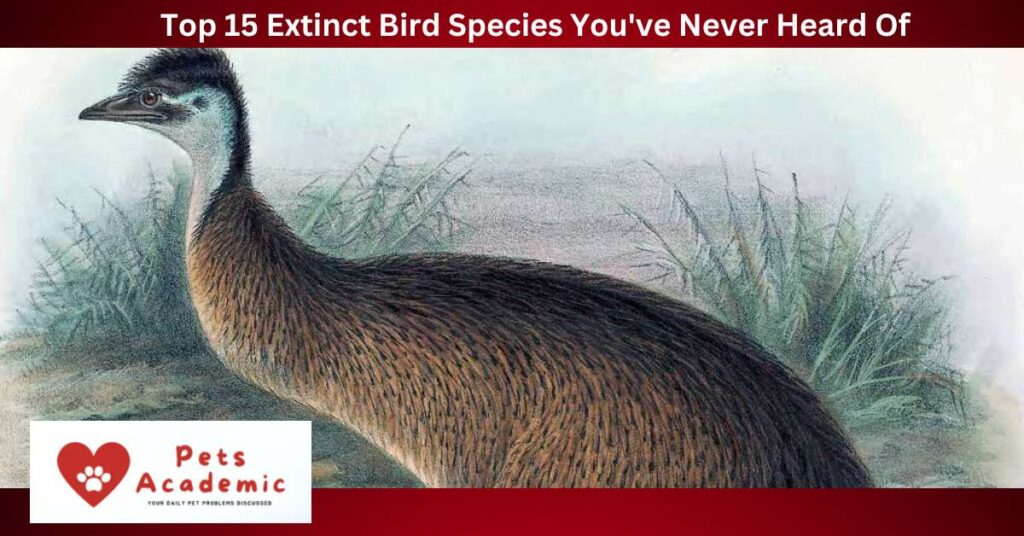Imagine a world where the skies were filled with magnificent bird species that no longer exist.
These unique creatures once roamed the earth, but sadly, they are now a part of history.
This article will explore the top 15 extinct bird species you may have never heard of before.
Get ready to be captivated by their beauty and amazed by their fascinating stories.
Importance Of Studying Extinct Bird Species

Studying extinct bird species allows us to understand the impact of human actions on biodiversity.
By learning from past mistakes, we can develop better conservation strategies to protect the species that still exist today.
Additionally, these extinct bird species provide valuable insights into evolutionary history and remind us of the delicate balance of our ecosystems.
In conclusion, exploring the top 15 extinct bird species takes us on a journey through time, showcasing the diversity that once thrived on our planet.
While it is heartbreaking to know that these magnificent creatures are no longer with us, their stories remind us of the importance of protecting and conserving the species that still exist today.
Impacts Of Human Activities On Bird Extinction
Human activities have had a profound impact on bird populations, leading to the extinction of numerous species.
Some key factors include:
- Habitat Loss: Deforestation, urbanization, and the conversion of natural habitats into agricultural land have significantly reduced available habitats for birds, depriving them of food sources, nesting sites, and migration routes.
- Invasive Species: The introduction of non-native species, such as rats and cats, to new environments has resulted in the decimation of bird populations, particularly on islands where birds may have evolved without natural predators.
- Overexploitation: The hunting of birds for their feathers, meat, and eggs, as well as the collection of bird specimens for museums and private collections, has contributed to population declines and, in some cases, extinction.
- Pollution: Pollution from agricultural runoff, oil spills, and industrial activities has contaminated bird habitats and affected their reproduction, migration, and overall health.
- Climate Change: Alterations in temperature, precipitation patterns, and sea levels associated with climate change have disrupted bird populations’ breeding and feeding behaviors, leading to shifts in their distributions and, in some cases, extinction.
Governments, organizations, and individuals must take action to mitigate these impacts and protect the remaining bird species.
Conservation efforts, habitat restoration, and sustainable practices are essential for preserving our planet’s incredible diversity of bird life.
Top 15 Extinct Bird Species You’ve Never Heard Of
01. Carolina Parakeet
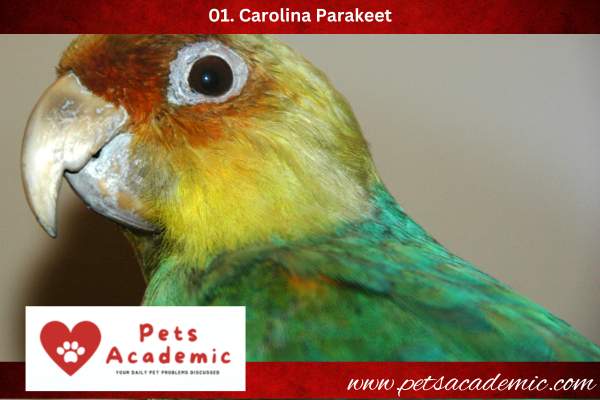
The Carolina Parakeet was a colorful, social bird that inhabited the eastern and southern parts of the United States.
Sadly, it became extinct due to habitat destruction and hunting.
These birds were known for their striking green and yellow plumage and were the only parrots native to the United States.
02. Dodo Bird

The Dodo Bird was a large flightless bird that once inhabited the island of Mauritius in the Indian Ocean.
It is one of the most famous extinct species and is often used as a symbol for extinction.
The Dodo Bird was known for its plump body, small wings, and long beak.
03. Arabian Ostrich

The Arabian Ostrich was a subspecies of the ostrich that used to roam the Arabian Peninsula.
It was a tall, flightless bird with large feathers and long legs.
The Arabian Ostrich was hunted extensively for its meat and feathers, leading to its extinction.
04. Great Auk

The Great Auk was a large, flightless bird that once inhabited the North Atlantic region.
It appeared similar to a penguin, with black and white plumage and a distinctive beak.
Overhunting and the destruction of its breeding grounds led to the extinction of the Great Auk in the mid-19th century.
05. Bachman’s Warbler

Bachman’s Warbler was a small, migratory bird that used to breed in the southeastern United States.
It had a bright yellow head, black neck, and white underparts.
The destruction of its habitat, mainly due to deforestation, led to the extinction of the Bachman’s Warbler in the early 20th century.
06. Tasmanian Emu
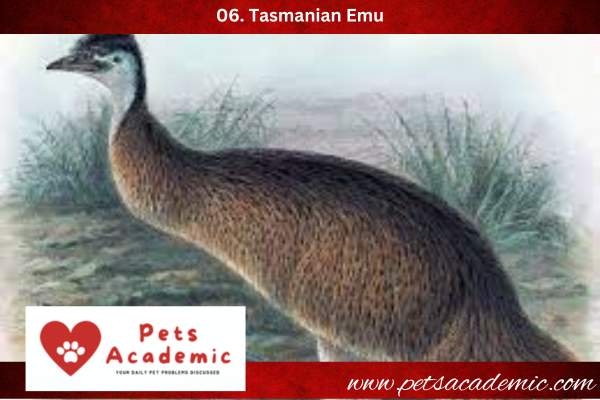
The Tasmanian Emu was a subspecies of the emu that once inhabited the island of Tasmania.
It was smaller and darker in color compared to mainland emus.
The last confirmed sighting of the Tasmanian Emu was in 1850, and it is believed to have gone extinct shortly after.
07. Laysan Rail
The Laysan Rail was a flightless bird endemic to the Laysan Island in the Hawaiian archipelago.
A small, brown bird inhabited the island’s grassy areas.
The introduction of rabbits and other invasive species to the island led to the extinction of the Laysan Rail in the early 20th century.
08. Seychelles Parakeet

The Seychelles Parakeet was a small, green parrot that once lived on the Seychelles Islands in the Indian Ocean.
It had a distinctive red patch on its forehead and a yellow upper beak.
Habitat destruction and predation by invasive species are believed to have caused the extinction of the Seychelles Parakeet.
09. Passenger Pigeon

The Passenger Pigeon was one of North America’s most abundant bird species.
Its beautiful grayish-blue plumage was known for its incredible flocking behavior.
However, mass hunting and habitat loss led to its population decline, and the last living Passenger Pigeon, Martha, died in captivity in 1914.
10. New Zealand Quail

The New Zealand Quail was a flightless bird native to New Zealand. It had a plump body, tiny wings, and a short tail.
Despite being a popular game bird, the introduction of predators such as rats and cats led to the extinction of the New Zealand Quail in the early 1900s.
11. Ivory-Billed Woodpecker
The Ivory-Billed Woodpecker was a large woodpecker that inhabited the southeastern United States and Cuba.
With its striking black and white plumage and distinctive ivory bill, it was once considered one of the most impressive woodpecker species.
The destruction of its habitat and excessive hunting contributed to its extinction.
12. Mauritius Blue Pigeon
The Mauritius Blue Pigeon was a beautiful, pigeon-like bird that was endemic to Mauritius.
It had bright blue plumage and red legs.
The colonization of Mauritius by humans and the introduction of invasive species led to the extinction of the Mauritius Blue Pigeon.
13. Laughing Owl
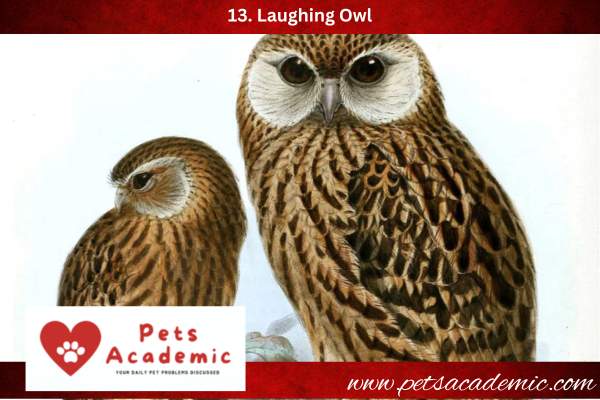
The Laughing Owl was a unique owl species native to New Zealand.
It was known for its distinctive call, which sounded like laughter.
The introduction of predators and habitat destruction led to the extinction of the Laughing Owl in the early 20th century.
14. Labrador Duck
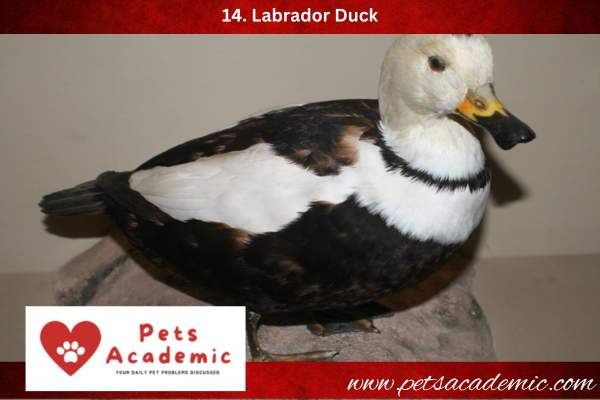
The Labrador Duck was a small sea duck that once inhabited the coastal areas of northeastern North America.
It had a dark plumage and a distinctive white crescent-shaped patch on its face.
Overhunting and habitat destruction contributed to the extinction of the Labrador Duck in the mid-19th century.
15. Stephen’s Island Wren
The Stephen’s island Wren was a small bird native to New Zealand.
It was known for its short wings and long legs, allowing it to navigate its habitat’s dense vegetation.
Sadly, within a year of its discovery in 1894, the species became extinct due to the introduction of predatory mammals to its island home.
Conclusion
Extinct bird species may be gone, but they are not forgotten.
These fascinating creatures are a reminder of the incredible diversity that once existed in the avian world.
By studying these extinct species, researchers gain valuable insights into the past and the impacts of human activities on our delicate ecosystems.
It’s essential to continue these studies to understand the consequences of our actions better and make informed decisions for the future.
As humans, we are responsible for learning from the past and working towards a future where our actions do not contribute to the extinction of more bird species.
By understanding the significance of extinct bird species and the impacts of human activities, we can strive for a world where birds thrive and continue to enchant us with their beauty and unique adaptations.
Related Posts: Do Kookaburras Eat Other Birds?

